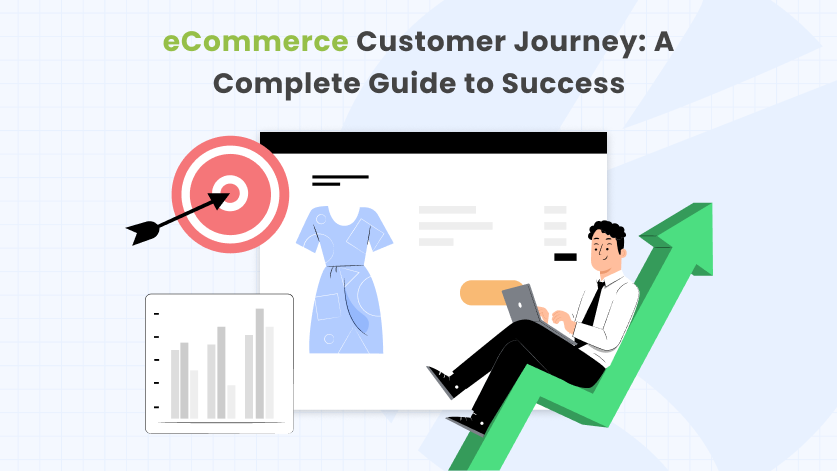In the dynamic world of eCommerce, the customer journey serves as the navigational roadmap that potential buyers follow when interacting with your online store.
Think about it as a virtual path that starts with their first awareness of your brand and ends with their final purchase decision. Just as a traveler sets out with a specific destination in mind, an online shopper sets out on the eCommerce customer journey with a specific product or solution in mind.
This journey is not linear; Instead, it consists of a series of touchpoints that customers interact with at different stages. Every step is critical, from the moment they discover your brand through a social media post, online search, or recommendation by influencers.
When the user finds your product, they may read reviews, compare other similar products with current products, and finally make a purchase.
What is the eCommerce Customer Journey?
The eCommerce customer journey refers to the series of steps or stages that a potential customer goes through when they interact with an online store, from their initial awareness of a product to making a purchase and potentially becoming a loyal repeat customer.
This journey is crucial for business owners to understand, as it helps them optimize their strategies to effectively engage customers and drive conversions.
As you navigate through this article, you’ll gain insights into the different stages of the eCommerce customer journey and learn how to optimize and analyze to maximize customer satisfaction and boost your business’s success.
Before we start with the stages of the eCommerce customer journey. Do you know the success rate of the Shopify store?
Don’t worry, here is the answer.
The Shopify success rate of eCommerce stores is around 5% to 10%. This means that out of every 100 businesses that use Shopify, only about 5 to 10 of them are successful.
Here is a detailed guide to the Shopify success rate.
Let’s break down the eCommerce customer journey into its key stages:
Stages of the eCommerce Customer Journey:
The eCommerce customer journey is a multi-step process that potential buyers go through when interacting with your online store. Each stage represents a significant touchpoint where customers engage with your brand and products.
By understanding and optimizing each stage, you can create a seamless and satisfying experience that ultimately leads to conversions and builds customer loyalty.
1. Awareness and Discovery:
At the initial stage, customers become aware of your brand’s existence. They may discover your products through social media platforms, search engines, influencer recommendations, or online ads. This stage is all about grabbing their attention and capturing their interest.
Here are the strategies to consider:
- Leveraging Social Media: Posts with engaging content, engaging visuals, and relevant hashtags can help you reach a larger audience and grab customer interest.
- Influencer Partnerships: Collaborating with influencers in your niche can help you introduce your products to their followers, leveraging their credibility and reach.
- Content Marketing: Creating valuable blog posts, videos, or infographics can showcase your expertise and attract new customers to your website.
2. Consideration and Evaluation:
In this stage, customers actively consider your products as potential solutions to their needs. They will visit your website, read product descriptions, compare prices, and read reviews. Your goal is to provide comprehensive information and build trust.
Here are the strategies to consider:
- Optimizing Product Pages: Customers can make more informed decisions when they have access to clear and detailed product descriptions, high-quality images, and specifications.
- Customer Reviews and Ratings: Positive reviews and ratings increase credibility by addressing potential issues and providing social proof.
- Comparison Guides: Offering side-by-side comparisons of similar products can help customers choose the best fit.
3. Conversion:
The conversion stage is the point in the customer journey when a potential customer decides to buy something. Your goal here is to remove any barriers that may prevent them from completing the transaction.
Here are the strategies to consider:
- Simplified Checkout Process: A streamlined and user-friendly checkout process can reduce cart abandonment rate and friction for the customer.
- Guest Checkout Option: Allowing customers to checkout as a guest without creating an account can speed up the process for those looking to make a quick purchase.
- Secure Payment Gateways: Customers are more likely to provide payment information if your eCommerce store is secure and trusted.
4. Post-Purchase Engagement:
After a successful purchase, the journey does not end; In the post-purchase phase, engaging customers at this stage is critical to developing long-term relationships and encouraging repeat business.
Here are the strategies to consider:
- Order Tracking and Notifications: Keeping customers informed of their order status and estimated delivery date creates transparency and engagement.
- Personalized Thank-You Emails: Sending personalized emails expressing appreciation and offering support can leave a positive impression.
- Loyalty Programs: Customers rewarded with loyalty points, discounts, or special offers for future purchases are more likely to stay engaged.
By focusing on each of these stages and tailoring your strategies to address the specific needs and concerns of your target audience, you can guide customers through a seamless and satisfying eCommerce journey that leads to conversions and ultimately, brand loyalty.
The Future of the eCommerce Customer Journey:
The future of the eCommerce customer journey is set to be exciting and transformative due to technological advancements, changing customer behaviors, and evolving business strategies. In the coming years, several trends are likely to shape the eCommerce customer journey:
1. Personalization and Customization: The eCommerce platform depends on data analytics, artificial intelligence (AI), and machine learning to provide highly personalized and customized shopping experiences to their customers. From personalized product recommendations to marketing messages, the goal is to provide what customers are looking for.
2. Augmented Reality (AR) and Virtual Reality (VR): AR and VR technologies will enable consumers to visualize products before purchasing. This experience can help bridge the gap between online and in-store shopping by providing consumers with a better understanding of product features and dimensions.
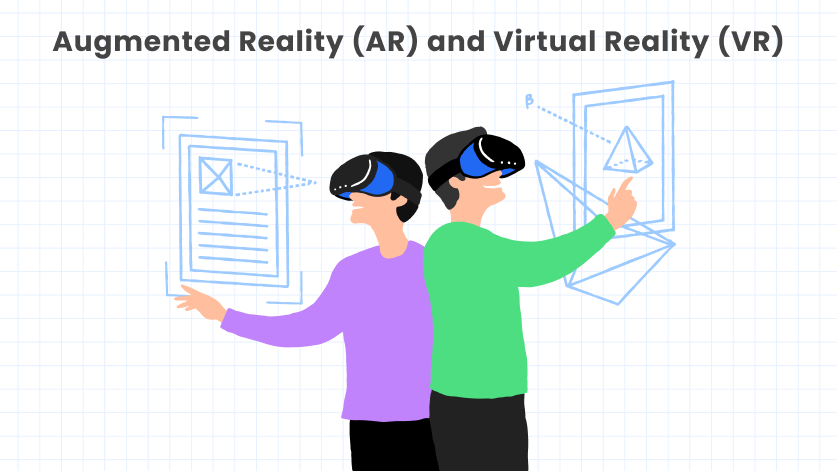
3. Voice Commerce: With the rise of voice assistants such as Amazon’s Alexa and Google Assistant, voice commerce is growing. Customers will be able to place orders, inquire about products, and receive product recommendations through voice interactions, simplifying the shopping process.
4. Social Commerce: Social media platforms are increasingly integrating shopping features, allowing users to buy products directly from their feeds. This trend reduces the lines between social interaction and shopping, making it easier for customers to discover and purchase products.
Here is the ultimate guide on how to use social media for eCommerce business.
5. Mobile-First Approach: Mobile devices continue to dominate online shopping. eCommerce businesses will focus on creating seamless and user-friendly mobile experiences, possibly incorporating features like one-click purchasing and mobile payment options.
6. Subscription Models: Subscription-based eCommerce will continue to grow, providing customers with the convenience of consistent deliveries of products and services they use frequently. This model encourages customer loyalty and predictable revenue for businesses.
Learn more in our guide on how to start a subscription business with Shopify.
7. Data Security and Privacy: As the number of online transactions increases, ensuring the security and privacy of customer data will become critical. eCommerce businesses will need to invest in robust cyber security measures to protect sensitive information.
8. Artificial Intelligence (AI) Customer Support: AI-powered chatbots and virtual assistants will play a crucial role in improving real-time customer support and assistance throughout the purchasing process.
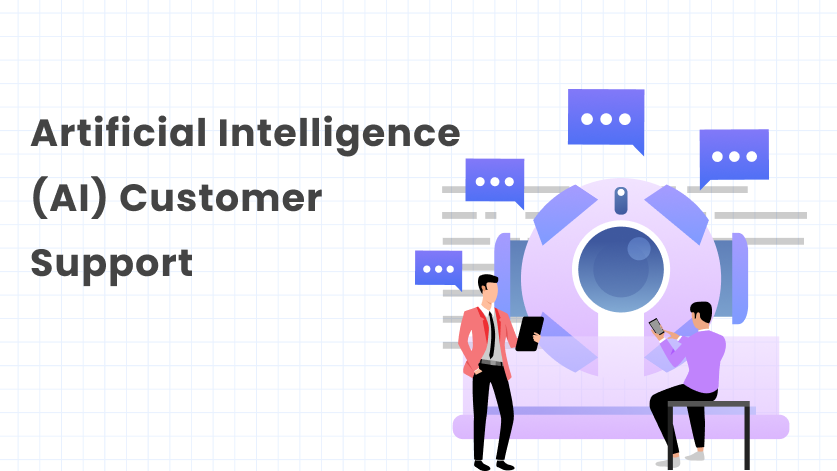
How to Analyze Data to Optimize eCommerce Customer Journey?
Analyzing data to optimize the eCommerce customer journey involves carefully examining the various stages that a customer goes through when interacting with your online store, from initial awareness to making a purchase and beyond.
This process helps you understand customer behavior, identify pain points, and make informed decisions to improve the overall shopping experience.
Here’s a step-by-step guide on how to analyze data for customer journey:
1. Define Key Metrics:
Key metrics are specific measurements that provide insight into your eCommerce business’s performance and effectiveness. These metrics are measured and help to understand how well your online store performs at various stages of the customer journey.
Here’s how to explain them:
1. Conversion Rate: Conversion rate is a metric that measures the percentage of website visitors who complete a desired action, such as making a purchase, signing up for a newsletter, or filling out a contact form. It is calculated by dividing the total number of visitors by the number of conversions and multiplying by 100.
2. Bounce Rate: Bounce rate indicates the percentage of visitors who leave your site after viewing only one page. A high bounce rate could suggest that your landing pages or website content needs improvement.
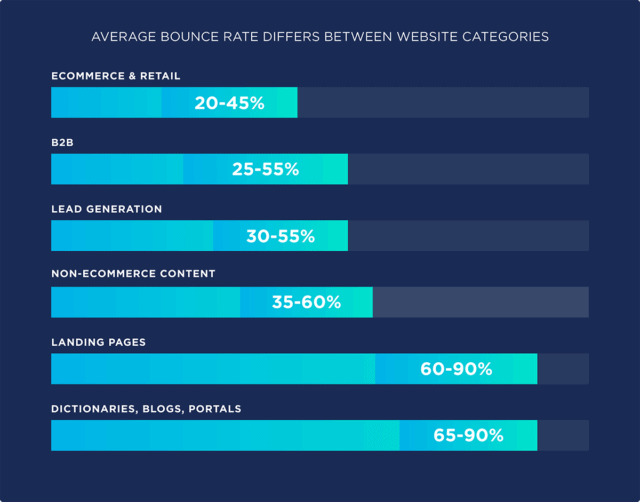
3. Average Order Value (AOV): Average order value (AOV) is the average amount of money customers spend on a single order. It’s calculated by dividing the total revenue by the number of orders.
4. Cart Abandonment Rate: This metric shows the percentage of users who add items to their shopping cart but do not complete the purchase. It is calculated by dividing the total number of abandoned carts by the total number of initiated checkouts and multiplying by 100.
Learn more about the cart abandonment rate.
5. Customer Retention Rate: This metric calculates the percentage of customers who make a second purchase. It is calculated by dividing the total number of customers at the end of a given period by the total number of new customers acquired during that period, then multiplying by 100.
Learn more about how to improve customer retention on your Shopify store.
6. Traffic Sources: Analyze the sources of your website traffic, such as organic search, paid ads, social media, and referrals. This helps you to understand which channels are driving the most visitors.
7. Time on Page: This metric indicates how long visitors spend on a specific page. It can help you identify engaging content and pages that require to optimize.
8. Exit Pages: Identify the pages from which visitors are most likely to leave your site. This can highlight problematic areas that require improvement.
2. Collect Data:
Collecting data is a fundamental step in understanding how customers interact with your eCommerce website and identifying areas for improvement.
Here’s a breakdown of the data collection process:
1. Website Analytics Tools: Utilize web analytics tools to gather quantitative data about user behavior on your website. The most common tool is Google Analytics, but there are other options like Mixpanel, Adobe Analytics, and more. These tools provide insights into metrics such as page views, sessions, user demographics, traffic sources, and user engagement.
2. eCommerce Platforms: If you’re using an eCommerce platform like Shopify, WooCommerce, Magento, or others, they often come with built-in analytics features. These platforms can provide data on product performance, sales trends, cart abandonment rates, and customer profiles.
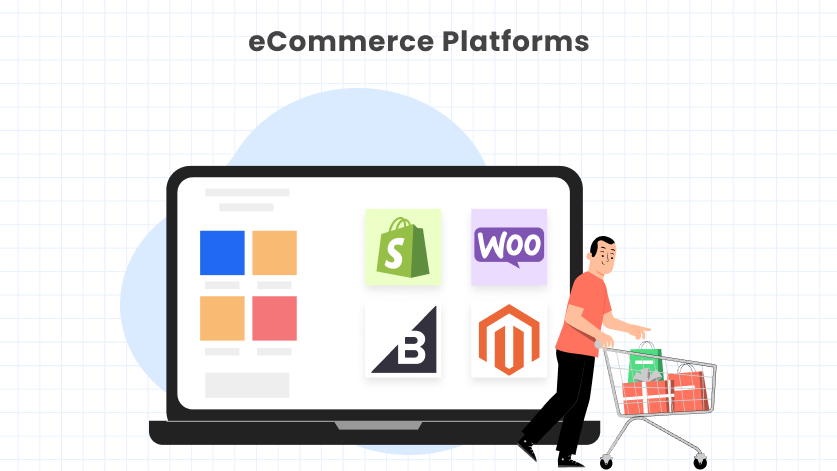
3. Setting Up Tracking: Ensure that you have tracking codes properly installed on your website. These codes (usually JavaScript snippets) allow analytics tools to collect data.
Here is the key tracking:
- Page Views: Track which pages users visit, how long they stay, and their navigation paths.
- Events: Set up events to track specific interactions such as clicks on buttons, downloads, video plays, and more.
- eCommerce Tracking: If you’re selling products online, implement eCommerce tracking to monitor transactions, revenue, and product performance.
4. Regular Data Review: Regularly review the data you’re collecting to ensure tracking codes are working properly and you’re getting accurate and up-to-date information. This ensures the reliability of your analysis.
5. User Identification: Collect data on user identification, such as whether they are first-time visitors or returning customers. This can help you understand how different types of users behave on your site.
6. Behavioral Data: Gather data on user behavior during their visits. This includes which products they view, how long they spend on each page, which pages they exit from, and interactions like adding items to the cart or initiating the checkout process.
7. Device and Browser Data: Collect information about the devices (desktop, mobile, tablet) and browsers visitors are using to access your website. This data is crucial for ensuring that your website is optimized for various platforms.
8. Geographical Data: Analyze the geographical locations of your visitors. This can help you tailor marketing campaigns and offers to specific regions.
3. Analyze Customer Behavior:
Analyzing customer behavior is a crucial step in optimizing the eCommerce customer journey. By understanding how customers interact with your online store, you can identify strengths, weaknesses, and areas for improvement.
Here are some stages for analyzing customer behavior:
- Awareness Stage: Analyze traffic sources and landing pages. Determine which channels drive the most traffic and how well they convert.
- Consideration Stage: Study product page interactions, such as clicks, time spent, and scroll depth. Identify which products generate the most interest.
- Purchase Stage: Analyze the checkout process. Check for cart abandonment rates and assess the ease of completing a purchase.
- Post-Purchase Stage: Track customer engagement after the purchase, such as feedback, reviews, and repeat purchases.
4. Identify Pain Points:
Identifying pain points is a critical step in optimizing the eCommerce customer journey. Pain points are areas of your online store where customers encounter difficulties, frustrations, or obstacles that hamper their shopping experience.
Addressing these pain points can lead to improved customer satisfaction, higher conversions, and overall business growth.
Here are some points to identifying pain points:
1. Analyze User Behavior: Review the data you’ve collected to identify patterns of behavior that suggest challenges or bottlenecks. Look for trends such as high bounce rates on specific pages, significant drop-offs in the checkout process, or low engagement on certain product pages.
2. Customer Feedback: Collect feedback directly from your customers. This can be through customer surveys, online reviews, social media comments, or customer support interactions. Listen to their complaints, concerns, and suggestions to gain insights into pain points.
3. Support Interactions: Review customer support interactions to identify recurring issues and questions. These issues can be affected if customers are constantly asking for clarification on certain policies or experiencing technical difficulties.
4. Heatmaps and Click Maps: Use heatmaps and click maps to visually identify areas where users are interacting and clicking the most. Areas without much interaction may indicate design or content problems.
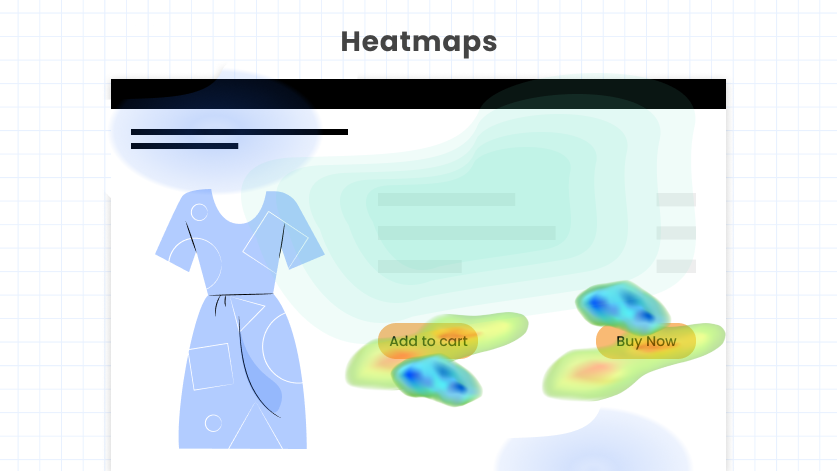
5. Competitor Analysis: Review your competitor’s websites and customer journeys. Identify what aspects of your competitor’s eCommerce you can learn from and implement into your own strategies.
6. Conversion Funnels: Analyze the conversion funnel to better understand the flow of users through your site and identify the stages where users tend are drop off. This helps identify specific pain points in the customer journey.
7. Mobile Experience: Check the mobile experience thoroughly. Mobile users often encounter unique pain points, such as slow load times, difficulty navigating, or unclear call-to-action buttons.
8. Technical Performance: Review the technical aspects of your website, such as page load times, broken links, and compatibility issues across different devices and browsers. Technical problems can contribute to a poor user experience.
5. Customer Lifetime Value (CLV) Analysis:
Customer Lifetime Value (CLV) is a crucial metric that measures the total value a customer brings to your business over the entire duration of their relationship with your company.
This metric helps you understand the long-term financial impact of acquiring and retaining customers, guiding your strategies for marketing, customer engagement, and business growth.
Why CLV is Important:
CLV goes beyond just the value of a single transaction. It considers the potential for repeat purchases, upsells and cross-sells, and referrals from a single customer. This long-term perspective helps you make more informed decisions about resource allocation, marketing budgets, and customer retention strategies.
6. Data Visualization:
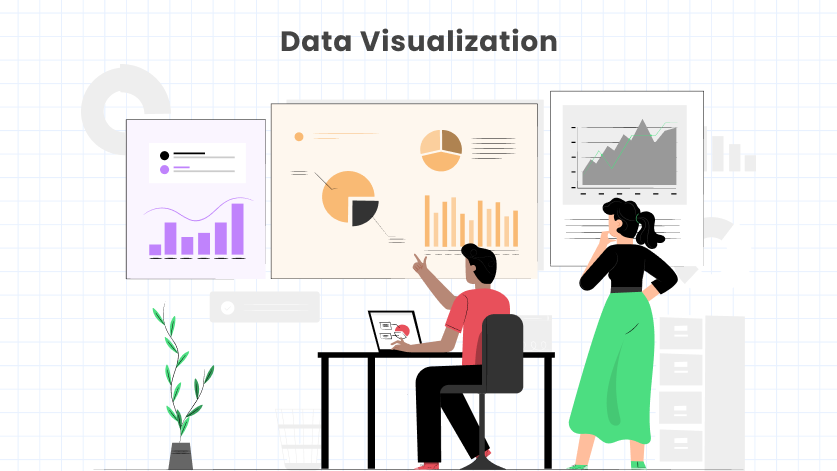
Data visualization is the process of transforming data into graphical representations that help business owners understand and interpret the data more easily.
In the context of eCommerce, data visualization can be used to understand the customer journey, which is the series of steps that a customer takes before, during, and after making a purchase.
In order to assist you with all these tasks, you can always consider taking the help of an eCommerce virtual assistant.
Some common types of data visualizations in the customer journey:
1. Bar Charts: Bar charts are among the most straightforward types of visualizations. They use rectangular bars to represent data values. Bar charts are ideal for comparing data between different categories or groups.
There are two main types of bar charts:
- Vertical Bar Chart: Bars extend vertically from the x-axis, making it easy to compare values.
- Horizontal Bar Chart: Bars extend horizontally from the y-axis, often used when category labels are lengthy.
2. Line Charts: Line charts are used to illustrate trends and changes over time. They’re created by connecting data points with lines. Line charts are effective for showing data progression, fluctuations, and patterns.
3. Pie Charts: Pie charts represent the proportions of a whole by dividing a circle into slices. Each slice corresponds to a specific category, with the size of the slice proportional to the data it represents. Pie charts are useful for showcasing percentages or parts of a whole.
4. Heatmaps: Heatmaps use color variations to represent data density or patterns. They’re often used with large datasets to visualize trends and variations in a matrix format.
5. Area Charts: Area charts are similar to line charts, but the area beneath the line is shaded. They’re often used to show cumulative data, such as tracking total revenue over time.
4. Scatter Plots: Scatter plots display individual data points as dots on a two-dimensional graph. They’re used to show the relationship between two variables. The position of each dot on the graph reveals the values of the two variables for that data point.
6. Bubble Charts: Bubble charts are a variation of scatter plots where each data point is represented as a bubble. The size of the bubble corresponds to a third variable, allowing you to visualize three dimensions of data.
7. Treemaps: Treemaps display hierarchical data using nested rectangles. Each rectangle’s size represents a value, and the rectangles are organized into a hierarchy. Treemaps are useful for illustrating parts-to-whole relationships in structured data.
How Mobile Commerce Can Impact Your Customer Journey?
Mobile commerce, also known as m-commerce, refers to the buying and selling of goods and services through mobile devices such as smartphones and tablets. The rise of mobile technology has had a profound impact on the customer journey in the eCommerce landscape.
Here’s a detail on how mobile commerce can impact the customer journey:
1. Convenience and Accessibility: Mobile commerce enables customers to shop anytime, anywhere, removing geographical and time constraints. Customers can browse products, compare prices, and make purchases from the comfort of their mobile devices, enhancing the convenience of the shopping experience.
2. Mobile-First Design: Mobile commerce drives businesses to adopt responsive and mobile-friendly website designs. This prioritizes smooth navigation and optimal viewing on smaller screens, leading to a more user-friendly experience.
3. Personalization: Mobile commerce enables businesses to gather valuable data about customers’ preferences and behaviors. This data can be leveraged to create personalized shopping experiences, including tailored product recommendations and customized offers. Such personalization enhances customer engagement and satisfaction.
4. Mobile Payments: The integration of mobile payment options, such as digital wallets and mobile banking apps, streamlines the checkout process. This reduces friction in the customer journey, leading to higher conversion rates. Additionally, the security features of mobile payments build trust among customers.
5. Location-Based Services: Mobile devices enable location-based marketing, notifying customers about nearby promotions, discounts, or relevant products. This hyper-targeted approach enhances the customer journey by delivering contextually relevant information.
6. Multi-Channel Journey: Mobile commerce is often just one part of a larger multi-channel customer journey. Customers might start their journey on mobile, continue on a desktop, and finalize the purchase in-store. Integration among these channels is crucial to provide a consistent experience.
7. Emerging Technologies: Mobile commerce continues to evolve with emerging technologies like augmented reality (AR) and virtual reality (VR). These technologies can transform the customer journey by allowing customers to experience products before purchasing.
How to Improve Your Customer Journey on Your eCommerce Website?
Improving the customer journey on your eCommerce website involves a combination of optimizing user experience, streamlining processes, and providing valuable content.
Here’s a step-by-step guide on how to improve the customer journey:
1. Understand Your Audience: Research and define your target audience’s preferences, behaviors, and pain points. This knowledge will guide your improvements to align with customer needs.
2. Simplify Navigation: Ensure your website has an easy-to-navigate structure. Use clear categories, menus, and search functionality to help customers find products quickly.
3. Mobile-Friendly Design: Optimize your Shopify store for mobile devices with responsive design. Ensure pages load quickly, buttons are easily clickable, and the overall layout adapts to different screen sizes.
4. Clear Product Presentation: Use high-quality images, detailed product descriptions, and customer reviews to provide comprehensive information about your products. Enable zoom and alternate views for better visualization.
5. Streamlined Checkout Process: Simplify the checkout process by reducing the number of steps required to complete a purchase. Offer guest checkout options and provide progress indicators to keep customers informed.
6. Multiple Payment Options: Offer a variety of secure payment methods, including credit/debit cards, digital wallets, and mobile payment solutions, to accommodate customer preferences.
7. Efficient Search Functionality: Implement an effective search bar that provides accurate results and supports auto-suggestions. Filters and sorting options can further help customers find what they’re looking for.
8. Personalization and Recommendations: Use AI-driven algorithms to provide personalized product recommendations based on browsing and purchase history, enhancing cross-selling and upselling opportunities.
9. Customer Reviews and Ratings: Display user-generated reviews and ratings prominently to build trust and confidence among potential buyers. Respond to reviews, both positive and negative, to show engagement.
10. Clear Return and Refund Policies: Clearly communicate your return and refund policies to instill confidence in your customers. Make the process easy and transparent to reduce hesitations about purchasing.
11. Live Chat Support: Offer live chat or chatbot support to assist customers in real-time. Address queries promptly and guide customers through any issues they encounter.
12. Fast Loading Speed: Optimize your website’s loading speed to prevent customer frustration. Compress images, use caching, and minimize unnecessary scripts to ensure quick page loads.
13. Trust Signals: Display trust badges, security certifications, and SSL icons prominently to assure customers that their data is secure during transactions.
14. Regular Testing and Optimization: Continuously monitor website analytics to identify areas for improvement. Conduct A/B testing to compare different elements and optimize based on data-driven insights.
15. Feedback Collection: Provide opportunities for customers to provide feedback on their experience. Use this feedback to continuously improve your website and processes.
16. Social Media Integration: Integrate social media buttons and links to encourage customers to share products and engage with your brand on various platforms.
Conclusion:
In conclusion, the eCommerce customer journey is a dynamic process where potential customers interact with your online store. This journey comprises touchpoints from awareness to purchase and beyond, with each stage playing a critical role.
To optimize the journey, utilize strategies like social media engagement, influencer partnerships, and personalized content for awareness. Provide detailed product information, reviews, and smooth checkout for conversion. Post-purchase engagement can be enhanced through order tracking and loyalty programs.
To ensure a seamless eCommerce customer journey, collaborating with experienced, expert eCommerce website developers is essential. Their expertise can help you create a user-friendly and efficient online store, further enhancing the overall customer experience.
The future holds exciting trends like personalization, AR and VR, voice commerce, and mobile-first experiences. Data analysis and mobile commerce are pivotal for success.
Remember, understanding your audience, simplifying navigation, and embracing mobile-friendly designs improve the journey. Continuously adapting to change ensures a seamless experience, builds loyalty, and drives conversions.
Now, how will you improve your customer journey? Share your thoughts below!








